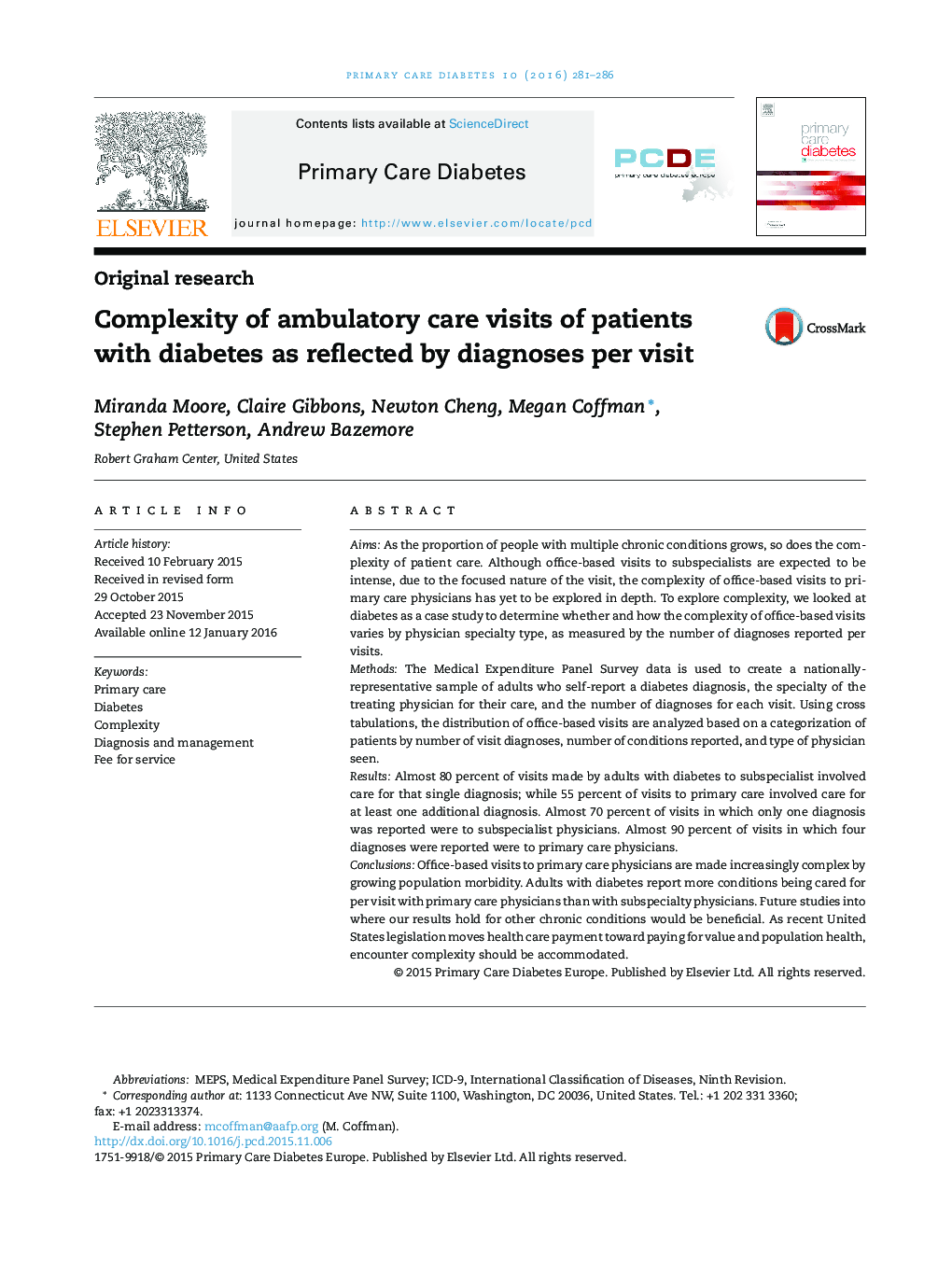| Article ID | Journal | Published Year | Pages | File Type |
|---|---|---|---|---|
| 2680723 | Primary Care Diabetes | 2016 | 6 Pages |
•Physician type and the number of diagnoses reported are identified.•80% of visits to subspecialist physicians involved care for a single diagnosis.•55% of visits to primary care involved care for at least one additional diagnosis.•70% of visits with one diagnosis reported were to subspecialist physicians.•90% of visits with four diagnoses reported were to primary care physicians.
AimsAs the proportion of people with multiple chronic conditions grows, so does the complexity of patient care. Although office-based visits to subspecialists are expected to be intense, due to the focused nature of the visit, the complexity of office-based visits to primary care physicians has yet to be explored in depth. To explore complexity, we looked at diabetes as a case study to determine whether and how the complexity of office-based visits varies by physician specialty type, as measured by the number of diagnoses reported per visits.MethodsThe Medical Expenditure Panel Survey data is used to create a nationally-representative sample of adults who self-report a diabetes diagnosis, the specialty of the treating physician for their care, and the number of diagnoses for each visit. Using cross tabulations, the distribution of office-based visits are analyzed based on a categorization of patients by number of visit diagnoses, number of conditions reported, and type of physician seen.ResultsAlmost 80 percent of visits made by adults with diabetes to subspecialist involved care for that single diagnosis; while 55 percent of visits to primary care involved care for at least one additional diagnosis. Almost 70 percent of visits in which only one diagnosis was reported were to subspecialist physicians. Almost 90 percent of visits in which four diagnoses were reported were to primary care physicians.ConclusionsOffice-based visits to primary care physicians are made increasingly complex by growing population morbidity. Adults with diabetes report more conditions being cared for per visit with primary care physicians than with subspecialty physicians. Future studies into where our results hold for other chronic conditions would be beneficial. As recent United States legislation moves health care payment toward paying for value and population health, encounter complexity should be accommodated.
